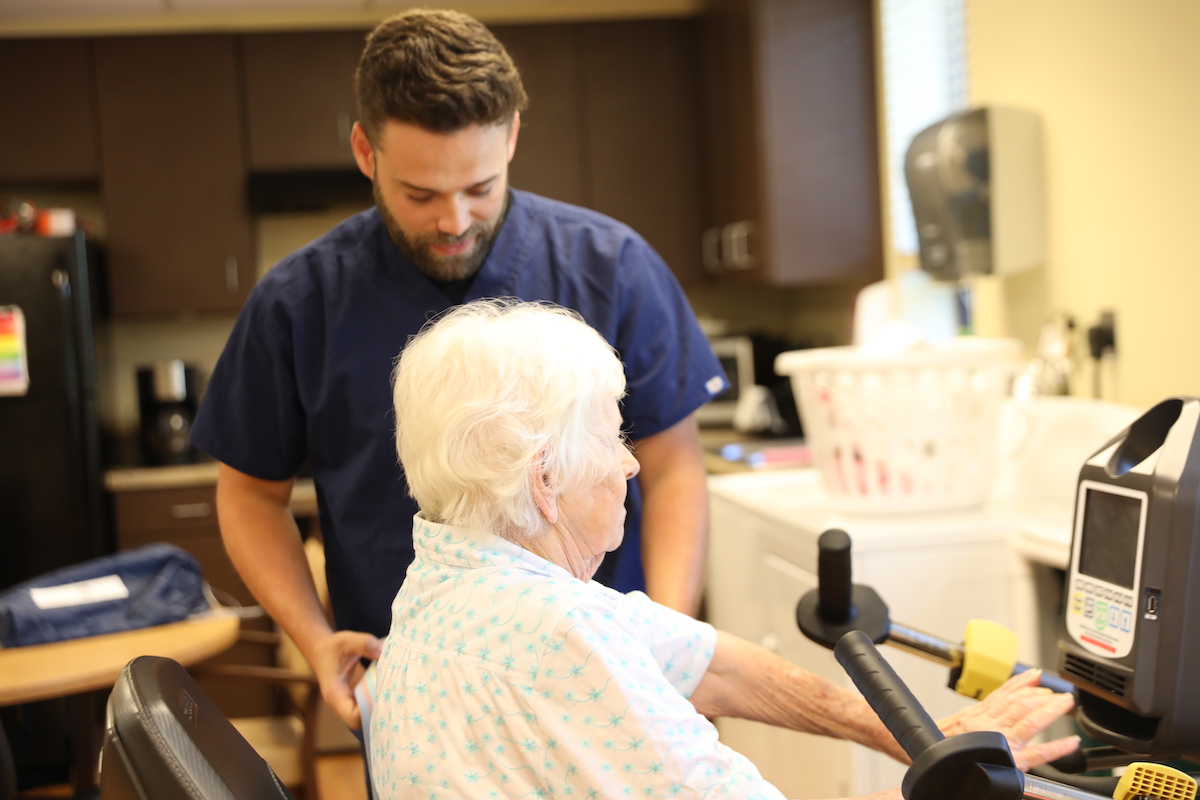4 Common Types of Rehabilitation and Why They Matter

Post-hospitalization rehabilitation is vital for individuals recovering from an injury, illness, or surgery, restoring mobility, confidence, and independence. There are several types of rehabilitation, each providing unique benefits.
It’s important to note that “Rehabilitation is not only for people with disabilities or long-term or physical impairments. Rather, rehabilitation is an essential health service for anyone with an acute or chronic health condition, impairment, or injury that limits functioning (World Health Organization).”
As a life plan community in Pleasant Hill, Tennessee, Uplands Village offers a variety of care services to help individuals achieve their recovery goals. As a result, our team is sharing information on four common types of rehabilitation and the benefits of each!
1. Physical Therapy
Physical therapy focuses on restoring physical function, mobility, and strength. It is commonly used to help individuals recover from injuries or surgeries, manage chronic conditions, or prevent future injuries.
The benefits of physical therapy include:
- Improved mobility, making it easier for individuals to move around and perform daily activities.
- Improved strength, which is crucial for restoring function and preventing future injuries.
- Faster recovery, reducing the amount of time spent in a post-acute rehab center.
2. Occupational Therapy
Occupational therapy focuses on helping individuals perform daily activities and tasks, building hand-eye coordination and improving motor skills. It is commonly used to help individuals recover from injuries or surgeries, manage chronic conditions, or adapt to disabilities.
The benefits of occupational therapy include:
- Improved independence by reintroducing individuals to activities and teaching them how to perform these activities and tasks on their own.
- Adaptation to disabilities by providing them with tools and techniques to perform daily activities and instilling confidence in their abilities.
- Faster recovery, reducing the amount of time spent in a post-acute rehab center.
3. Speech Therapy
Speech therapy aims to improve communication skills and is commonly used to help individuals with speech or language disorders, swallowing difficulties, or cognitive impairments.
The benefits of speech therapy include:
- Improved communication skills, including speech and language skills.
- Improved swallowing function, making it easier to eat and drink.
- Improved cognitive function, helping individuals with memory, attention, and problem-solving skills.
- Increased confidence by improving their communication skills and enhancing independence.
4. Aquatic Therapy
Aquatic therapy is a type of rehabilitation that takes place in a pool. It is commonly used to help individuals recover from injuries or surgeries, manage chronic conditions, or improve overall fitness.
“In 2015, researchers studying patients with spinal stenosis, a neurological condition that affects the lower back and neck, affirmed APT as “a safe and enjoyable intervention [for] better short-term improvement in pain and function than conventional physical therapy (healthcentral.com).”
The benefits of aquatic therapy include:
- Reduced pain sincethe water supports a person’s weight, which helps to relieve pain and increase the range of movement in their joints.
- Relaxed muscles due to the warm water, which stimulates blood flow throughout the body and improves circulation.
- Low-impact exercise, which is easier on the joints and reduces the risk of injury.
Comprehensive Rehabilitation at Uplands Village
Depending upon each individual’s unique circumstances, our life plan community offers several rehab therapies, including physical, occupational, speech, and aquatic therapy options.
We aim to help those utilizing our rehabilitation services regain their strength, recover confidence, and find safe ways to get back to doing what they love.
Physical, occupational, speech, and aquatic therapy can help individuals achieve their rehabilitation and recovery goals. Each type of therapy has unique benefits, and the choice of therapy depends on the individual’s condition and needs.
It is essential to note that rehabilitation requires commitment and patience from the individual undergoing therapy. In addition to working with a qualified therapist, individuals can also take an active role in their recovery journey. This can include following a prescribed exercise program, maintaining a healthy diet, and staying motivated throughout the rehabilitation process. Individuals can achieve their rehabilitation goals and improve their overall health and well-being with the right attitude, commitment, and support.
We invite you to explore our website to learn more about our rehabilitation services or contact a member of the Uplands Village team.

